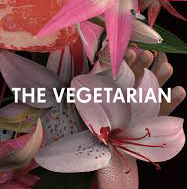In his 1914 book The Architecture of Humanism, the architectural critic Geoffrey Scott argued that the quintessential humanist architecture was the style of the Italian Renaissance. If humanism in thought was epitomised by an Erasmus or Rabelais, then its built form was encapsulated in the buildings of 16th century Florence. Scott helped to inspire a neo-Georgian idiom that would genuflect to the original Enlightenment moment rather than expand it.
Nonetheless, something in Scott’s rationalism points beyond mere simulation: “Architecture, simply and immediately perceived, is a combination, revealed through light and shade, of spaces, masses and lines”: that is, something that doesn’t need ornament or historical reference. Enter Modernism and its commonly alleged inhumanity.
At the Barbican’s Alvar Aalto Through the Eyes of Shigeru Ban (Barbican, London, until May 13) we have a celebration of a Finnish Modernist architect whose work is pitched as a bridge between brutal modernism and humanism.
 The exhibition space is designed by Shigeru Ban, a Japanese architect who has designed humane yet modern housing, often in paper, for households hit by natural disasters. Look around it and all you can see is pine, undulating curves and a proto-Ikea unthreatening utilitarianism. On the wall are apposite Aalto quotations: “Every product of architecture … should be a fruit of our endeavour to build an earthly paradise for people,” or “My starting point is as a humanist, if I may use so solemn a word.”
The exhibition space is designed by Shigeru Ban, a Japanese architect who has designed humane yet modern housing, often in paper, for households hit by natural disasters. Look around it and all you can see is pine, undulating curves and a proto-Ikea unthreatening utilitarianism. On the wall are apposite Aalto quotations: “Every product of architecture … should be a fruit of our endeavour to build an earthly paradise for people,” or “My starting point is as a humanist, if I may use so solemn a word.”
All very laudable. The paradox here, however, is that this turn to the “human” comes from emphasising precisely that which is not made by man. Rather than steel and concrete, wood and brick; rather than the big city, the forest; rather than the geometric plan, the irregularities of nature. Curiously this, rather than the unashamedly manmade, stands for humanism.
To work out how we got here, it’s worth tracing Aalto’s own personal trajectory. His earliest major work, in the late 1920s – after an apprenticeship that trained him in the anti-Romantic neoclassicism hymned by Geoffrey Scott – aligned him with the two architectural groups that were most technocratic and harshly modern of the era, namely the Weimar Republic’s Functionalists (as in “form follows function”) and the Soviet Constructivists, who celebrated the romanticism of industry and offered their services to the Bolsheviks.
Both were fans of the work of Frederick Wilmslow Taylor, the management theorist whose work shaped the Fordist production line. Taylor’s time and motion studies imposed upon the body a series of fixed, constricted, repetitious motions, making man learn from machine. The machine itself, that extension of man, was the motif of both of these movements, taking from it an approach to society and to the human itself as something that could – and should – be rationalised.
Functionalists concentrated on the mass production of objects specifically designed for human needs rather than according to received ideas of beauty. Represented best by the existenzminimum urban planning of the “New Frankfurt” under the architect Ernst May from 1924-30, or by the Bauhaus under its second director Hannes Meyer, this was a rigorous approach to man and to society inflected by Marxism that aspired to turn architecture from an art to a science. Sometimes Functionalism took a friendly, comradely approach to changing the lives of its inhabitants, as in May’s concrete squares and courtyards, set in parkland and greenery – or it could have a geometric intensity that still disturbs, as in Ludwig Hilberseimer’s plans for cities of endless towers and motorways.
Aalto’s adaptation of this can be seen in his cubic, rectilinear 1928 Turku newspaper offices. But his Paimio tuberculosis sanatorium of 1929 spreads itself out to the forest around in a generous, non-linear plan, while the totality of the design, with every discrete detail freshly designed for the comfort of its patients, exemplifies his “humanising” of Functionalism – yet it also owes a major debt to the example of Constructivism. In counterpoint to the severity of the Germans, the Soviets opened out their buildings, used pinwheel plans and curves, demonstrating the possibilities of what they could at that point still claim with seriousness was a more rational economic system. Paimio, whose classic status is not in doubt, cribs from Alexey Shchusev’s sanatorium in the Caucasus, built two years earlier and lost to history.
Around 1935, though, Aalto makes his break with these technophile avant-gardes. In his near-manifesto “Rationalism and Man” this takes the form of a call for the “extended concept of Rationalism”. Aalto advocated a dialectical conception of the human, as much the master of the machine as a creature fundamentally part of the natural world. There would be a push and pull between the two, but never a conflict. Drawing on the wooden constructions of rural Finland, his later aesthetic – epitomised by the 1958-87 Seinajoki Civic Centre – would be irregular, make generous use of natural materials, and diffuse itself into the surrounding verdancy.
Aalto’s humanism is seductive: comforting yet frequently surprising in its vaulting angles and curves, it provides much of what a humanist architecture should be about. But what is left out is excitement, the thrill of the big city, the clatter and roar of industry and scale, the sense of force and power that moves and shocks. What’s missing hits you as soon as you leave the exhibition halls.
Because straight away you’re in the heart of Chamberlin, Powell and Bon’s Barbican Estate (1958-82), which does everything that Aalto’s aesthetic disavows, with its contrasts of scale, the sheer sculptural masses of its glinting concrete, its tight plan. The Barbican was the last great efflorescence of Brutalism (from the French beton brut, or raw concrete): a British movement which directly opposed the humanism of Aalto in favour of a return to the fierce rationality of Functionalism and Constructivism.
In fact, the Brutalists and Aalto had much in common – “truth to materials”, an oblique approach to planning, and both created imaginative tower blocks against the blank boxes which would dominate mass housing – but Brutalism spun out of opposition to his notions of warmth and cosiness. After 1945, a Scandinavian style was dominant in developments like the New Towns such as Harlow. This was generally less daring than Aalto, though shared his care not to alienate. Yet by the late ‘50s this started to seem to some to be overly wholesome.
The Alton Estate in Roehampton (1952-59) pitted the nascent Brutalists and the “Scandinavians” against each other over lush parkland: brick, tile and patterning facing off textured concrete slab-blocks. For its first decade Brutalism was genuinely popular; the ambitious scale and futurist romanticism of council housing schemes like the Park Hill complex in Sheffield had contented tenants in the era of the “white heat of technology”.
However, in a Barbican-like development like Thamesmead (at the edge of London, and the setting of Kubrick’s A Clockwork Orange), the pejorative meaning of Brutalism becomes apparent. Its flaw is that for Barbican residents a bit of the old ultraviolence is merely a breath of bracing air: yet if your existence involves plenty of struggle already, then living somewhere so aesthetically uncompromising could easily reinforce the petty brutalities of everyday life. This can be a convenient alibi for privatising estates like Park Hill.
 So the Scandinavians won and the Brutalists lost. Look round British cities today, and any new-build developments with ambitions beyond 19th-century revivalism make gestures towards Aalto: that Scandinavian sense of ease and utility, the ubiquitous wood or brick detailing. Inside, most of these flats are meaner than the existenzminimum of the Functionalists. Aalto’s devices are reduced to a formalist caricature to hide the shabbiness inside.
So the Scandinavians won and the Brutalists lost. Look round British cities today, and any new-build developments with ambitions beyond 19th-century revivalism make gestures towards Aalto: that Scandinavian sense of ease and utility, the ubiquitous wood or brick detailing. Inside, most of these flats are meaner than the existenzminimum of the Functionalists. Aalto’s devices are reduced to a formalist caricature to hide the shabbiness inside.
Even so, one can’t help feeling that a rationalist reaction is long overdue. In industrial Germany (appropriately) is Zaha Hadid’s 2006 Phaeno Science Centre, a sublimely powerful abstract concrete tribute to the other humanism – the planning, codifying human, putting itself across in almost primal form. Whether this rough beast is likely to slouch back into our cities any time soon is a moot point – but perhaps, rather than trying to look like some Scandinavian forest idyll, they could do with a return to the marriage of man and machine. ■
Owen Hatherley is a researcher in political aesthetics at Birkbeck College, London. He blogs at nastybrutalistandshort.blogspot.com

